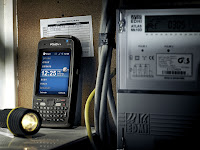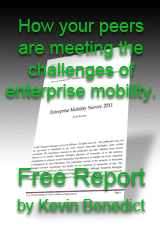Standard Chartered Bank - India has provided 12,000 iPhones to employees across 70 countries, replacing some 8,000 BlackBerry devices, and has developed a range of custom-built apps to streamline internal processes. “Our increasing usage of, and dependence on smartphones allows our employees to utilize a wide array of applications anywhere and at anytime,” reports Matthew Norris, CIO, Standard Chartered Bank - India.
“The world is becoming more social. Just as e-business
changed business forever, now, 10 years later we find ourselves at another
junction: the coming of age for Social Business—as social computing, policies,
governance and cultures are integrated into enterprise design. The explosion of
mobile devices and new Cloud delivery models has paved a unique way for
industries to take step further in transforming the era of Social Business,” predicts
James Velasquez, Country Manager, IBM Philippines.
“At present about 7-8 percent of any corporate workforce is
given phones by the employers. We see this increasing as more and more
corporates replace laptops with smartphones,” says Suresh Vedula, Director,
Enterprise Mobility, Nokia India.
According to a study by International Data Corporation
(IDC), mobile workers will be over 37% of the total workforce by 2015. The largest growth is forecast for
Asia/Pacific (excluding Japan), from 601.7 million in 2010 to 838.7 million
mobile workers in 2015.
Mobile payment solutions provider Trunkbow International
Holdings Limited announced on January 10, 2012 a partnership has been formed
with China’s bankcard association China UnionPay to develop a new mobile
payment applet.
All Deals Asia launched an iPhone app in early January,
2012, and is working with e-commerce and discount sites to become an aggregate
deal site in the Asia Pacific Region.
Online shopping in India is growing, with one report showing
an 18 percent increase in the past year, and the growth is expected to
continue.
According to a report by Telecom Regulatory Authority of
India (TRAI), one-third of the mobile users in India use data and internet
services via their mobile devices.
*************************************************************
Kevin Benedict, Independent Mobile Industry Analyst, Consultant and SAP Mentor Volunteer
Follow me on Twitter @krbenedict
Join the SAP Enterprise Mobility and Sybase Unwired Platform Groups
Read The M2M News Monthly
Full Disclosure: I am an independent mobility analyst, consultant and blogger. I work with and have worked with many of the companies mentioned in my articles.



















